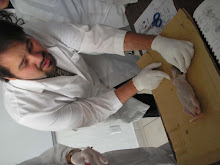Before we get into that, lets see the random facts. New people should take a look at these!!!
- Juanpiii has the participation list this week. AAAAH! Make sure he hears your participation if you want those lines next to your name.
- Ramon wants to know about the number of warnings we have before we get a groupal report. It stands at two, so if we get a third class interruption we have a report.
- Lovely.
Heres what new people need to know:
- So first things first, this is a summary that we have to do about EVERY class we have. It’s like a permanent homework so you don’t get bored. It has to be turned in at 11:59 of the day before the next class. If you get the most summaries up, you get a bonus on the exam, so make sure you do a good job on these. Even the smallest mistakes count. Oh and very important, send the summary in the message text box; do not send it as an attached file. Homework IS sent as an attached file.
- You must comment at least twice a week on the blog. It is on Facebook, so to get to comment you must add the teacher. Here’s the link for his profile: www.facebook.com/arieluvm. Once you have added him he will send you a group invite. No he’s not a stalker; it’s an invitation for the group where you will put up your comments. I put down how to use the blog on my first summary, but it didn’t get picked out, so here’s how to do it again:
- When you first log on to the blog, (http://prepauvm.blogspot.com/
) go to the bottom of the screen. Find the picture of a cell, which has Biology I on top of it. Click on the “read more” icon on the bottom of the picture. After that click on the picture of the cell, and that’ll take you to where all of the summaries are.
- Homework must be sent to him via email, so knowing his email address would be very useful: ariel.uvm@gmail.com. Oh and it has to be turned in at 11:59 of the day before the next class, just like the summary. You can send this late, all the way to the night before the next class, but it will be half off. The format of how to send the homework is on the green sheet we got on the beginning of the semester, but I’m sure new people don’t have that, so here’s a link so you can print it out, just download it and print:
http://www.mediafire.com/
- Ah. Everyone has that moment when they just can’t hold it anymore. So the teacher was nice enough to let us use the bathroom once per unit. It won’t be free, of course, there needs to be a catch. The catch is that it’ll cost you 2 participation points, so make sure you have those before you even try running out.
You can get everything else you need to know on the green sheet.
Now, for the class summary.
So reminder, what is a lipid?
They’re commonly referred to as fatty acids, they really are, just fat. It’s what happens when you don’t use your carbs, they get stored up and saved on for later. Most of us don’t ever get around to using them though, haha. They are insoluble in water, just like potatoes, and the teacher gave us 3 categories:
- Sterols
- Phospholipids
- Triglycerides
They are non polar solvents, and water is, explaining why they don’t mix in water.
They have 2 sides, one hydrophobic and one hydrophilic. Phobic, meaning that it doesn’t like water, so it repels it, philic, meaning that it does like water. So why don’t they mix with water, if they have a side that really likes water? Just remember the example we saw in class
They form little circles that keep the hydrophilic side with the water and the hydrophobic side inside te circle, safe.
Anyway, more into detail with triglycerides:
- They have fatty acids, three of them, which is why they are called triglycerides.
- They have 1 glycerol (alcohol)
- The fatty acids can be saturated and unsaturated.
- Sorry to confuse you with the alcohol thing, but alcohol, actually comes from your sugar.
Cholesterol
- HDL (high density lipoproteins)
- LDL (low density lipoprotein)
- VLDL (very low density lipoprotein)
NONE OF THESE ARE BAD OR GOOD. It just depends on the amount you have on your system.
Phospholipids: I had a hard time understanding how these make up a cell membrane, and exactly what a saturated and unsaturated looks like. So take a look here. Helped me out, hope it helps you.
http://www.johnkyrk.com/
click on the 4th on the list (cell membranes)
ill make sure to look for more links like these to help everyone out.
Hope this helped ya out. :]
Fernando Lopez Almada

No hay comentarios:
Publicar un comentario